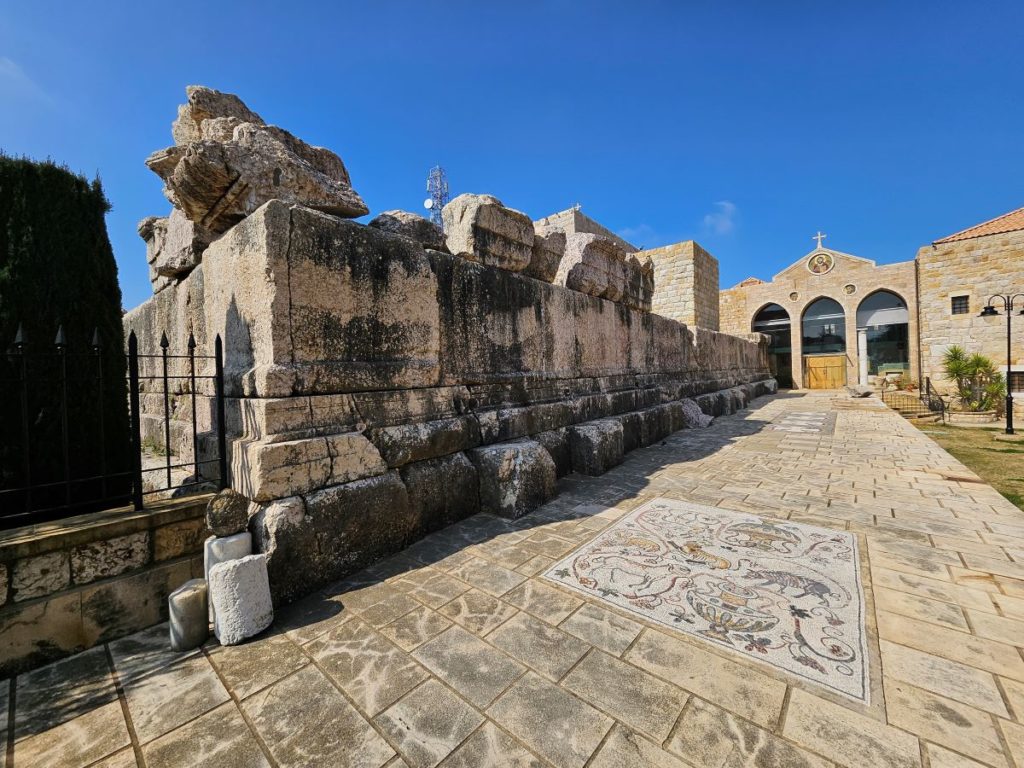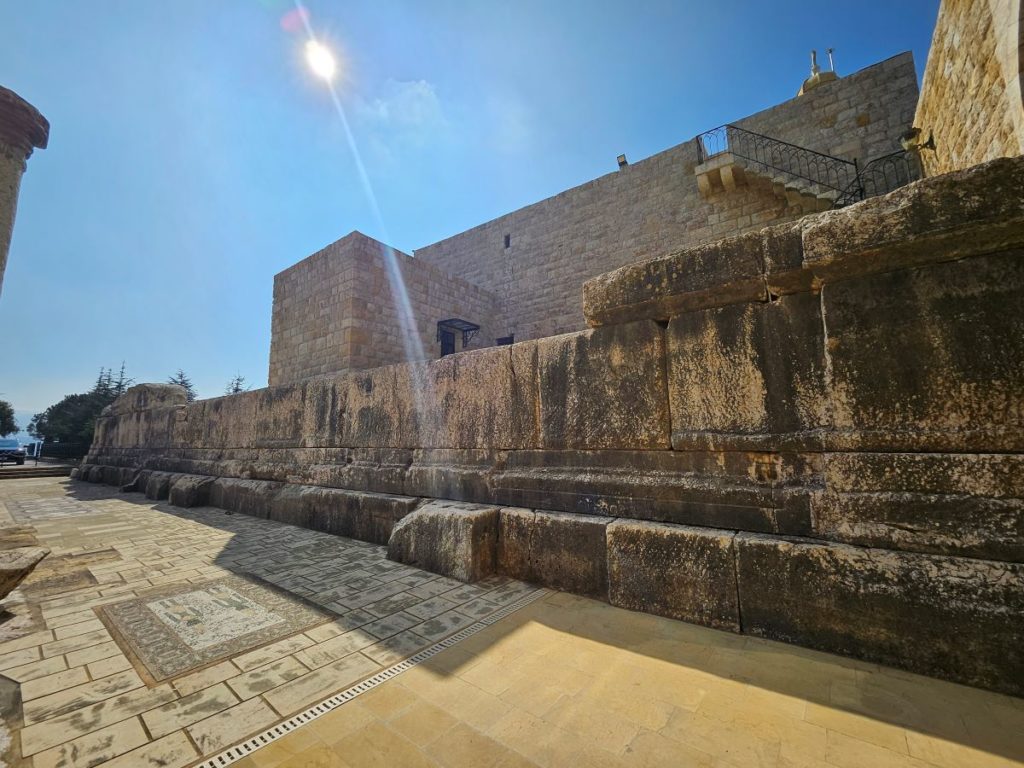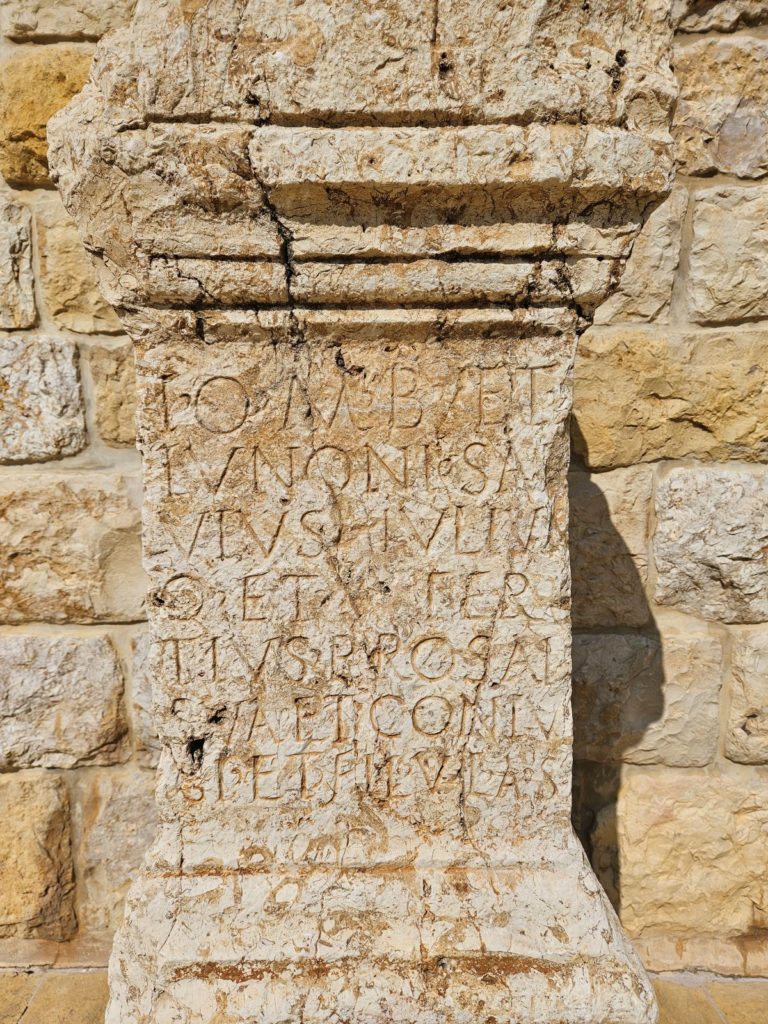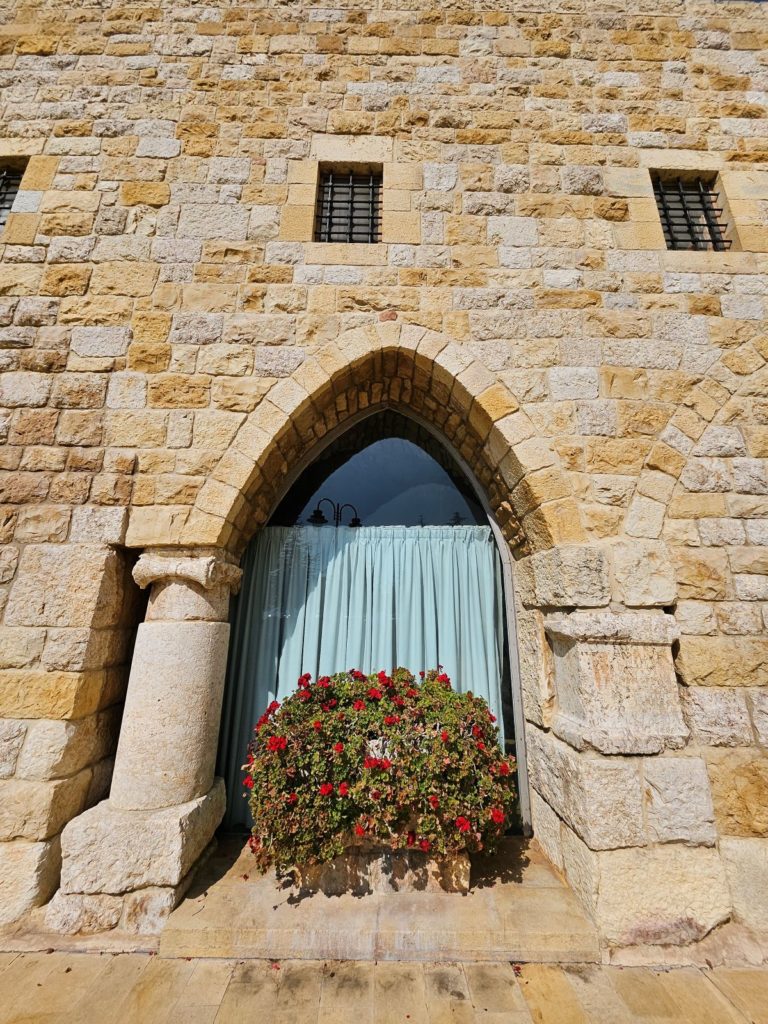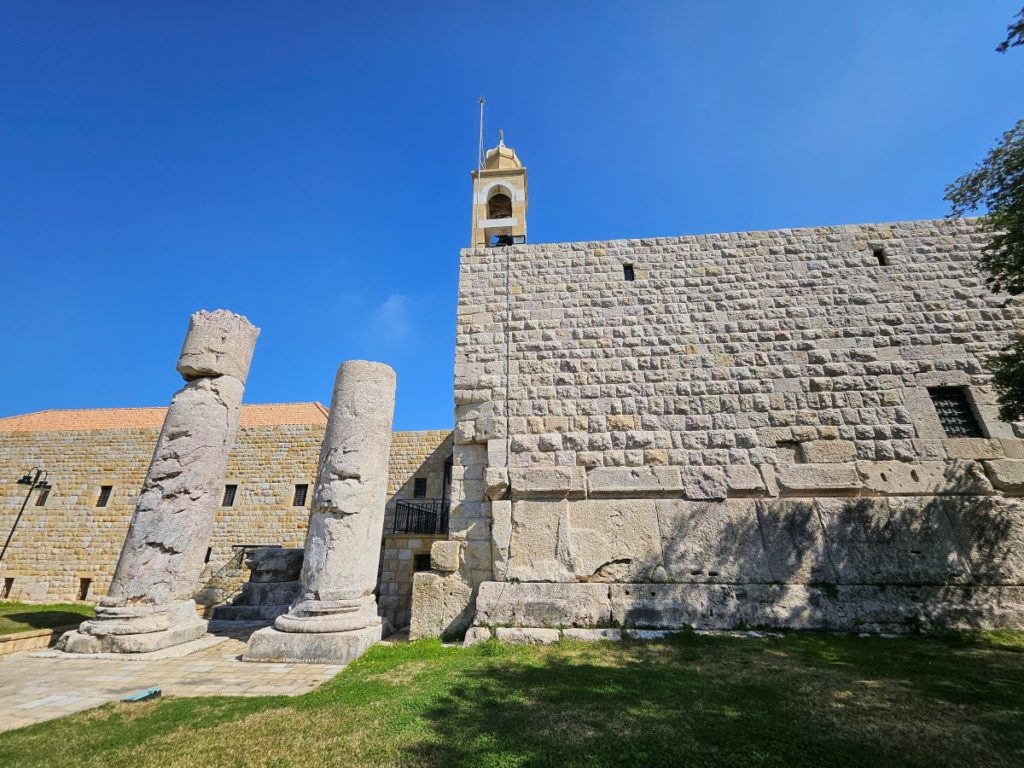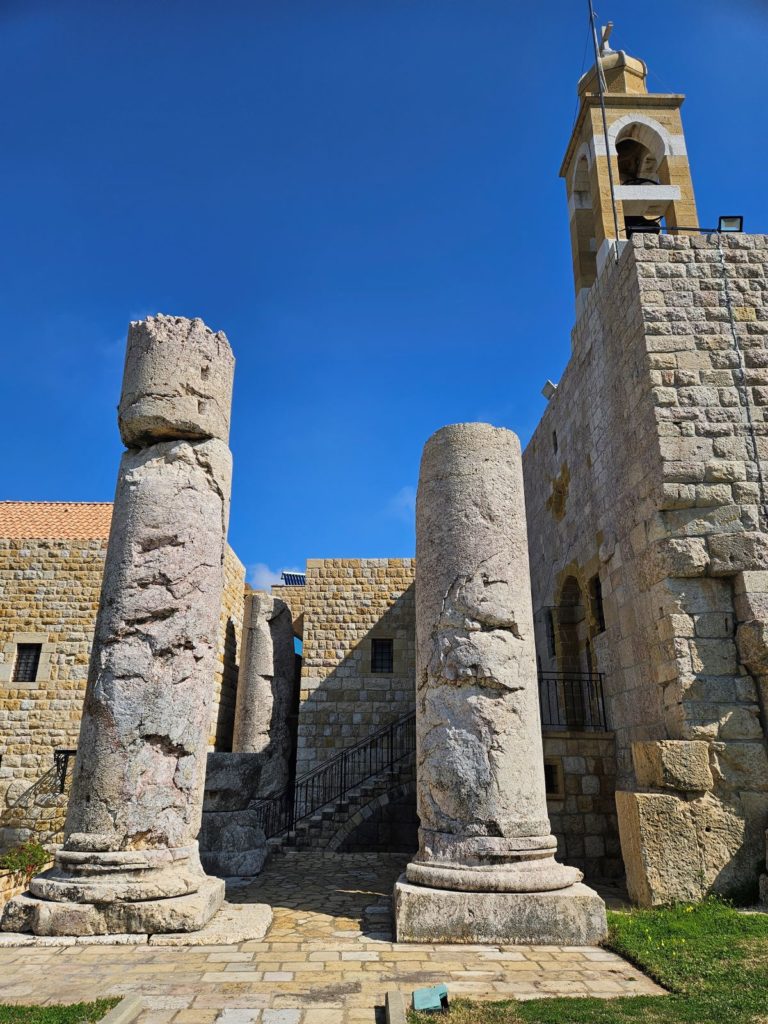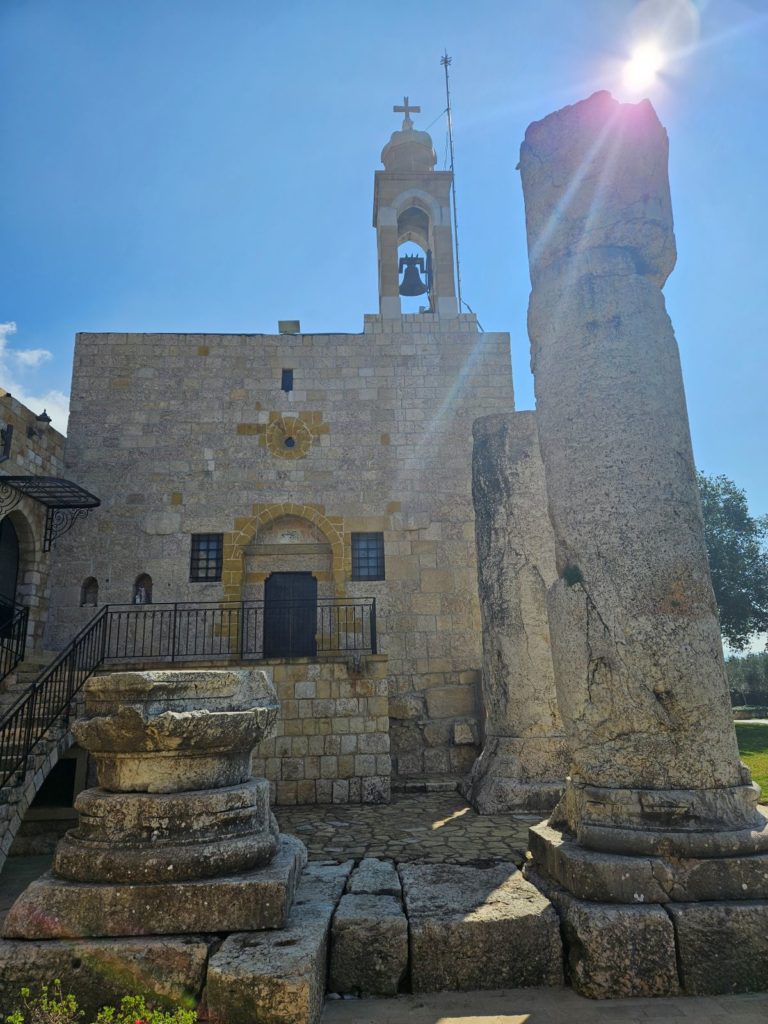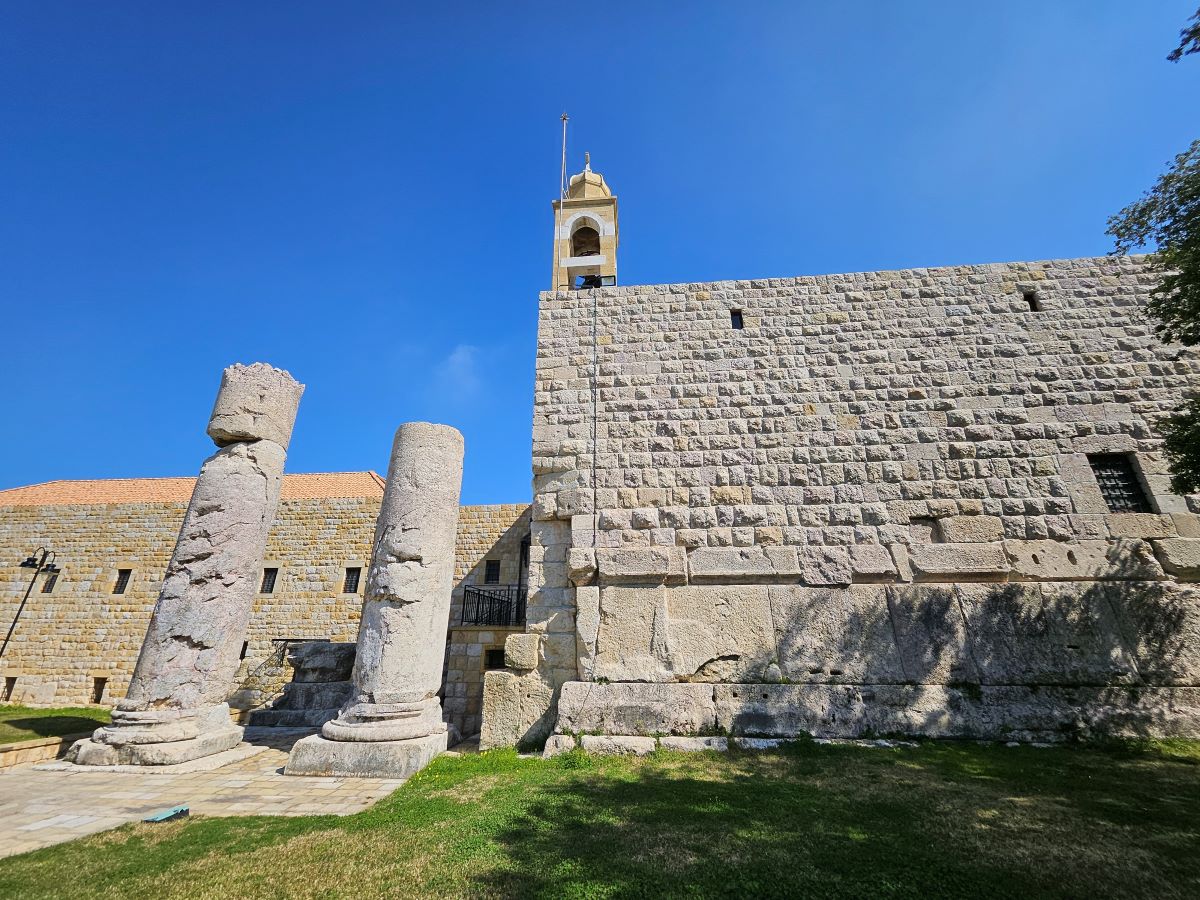Deir el-Qalaa, the “Fortress Convent”, houses the remnants of a Roman-era temple, located at approximately 730m altitude, on the north bank of the Nahr Beirut, the ancient Magoras, and to the south of the village of Beit Mery. The temple is part of a larger archeological site that also includes two other smaller temples, and an ancient town, to the northeast.
Structure
Archeological studies revealed that the temple rests only on a foundation base of megalithic stones, deprived of a podium unlike many other temples around Lebanon. Open to the northwest towards the sea and Berytus (Beirut), with a tetrastyle prostyle plan and an Ionic order, including a pronaos and a rectangular cella at the bottom of which was the platform of an adyton. The walls of the cella, decorated with pilasters in the rear angles, are extended on the facade by antes.
Around 1750, The Saint-Jean-Baptiste convent was built on top of the temple foundations by the monks of Mar Chaaya. The church which rises behind the columns of the pronaos has itself undergone transformations on two or three occasions.
Diety
The inscriptions discovered on site make it possible to attribute the temple to Jupiter Balmarcod.
Cultic Practices
The epigraphic record of Deir el-Qalaa includes more than a hundred Greek and especially Latin inscriptions and shed light on the cultic practices of the colonists of Beryte, and the pilgrims who met to honor the gods of Beryte (Mater Matuta, the Genius, the Fortune of the colony) and of Heliopolis (Jupiter, Mercury and Venus), the emperors of Rome (Trajan, Hadrian, Septimius Severus) and the group of local deities dominated by Jupiter Balmarcod and Juno Queen.
Karim Sokhn
Tour Operator & Tour Guide
References:
La vie Religieuse Au Liban Sous L’Empire Romain – Julien Aliquot
